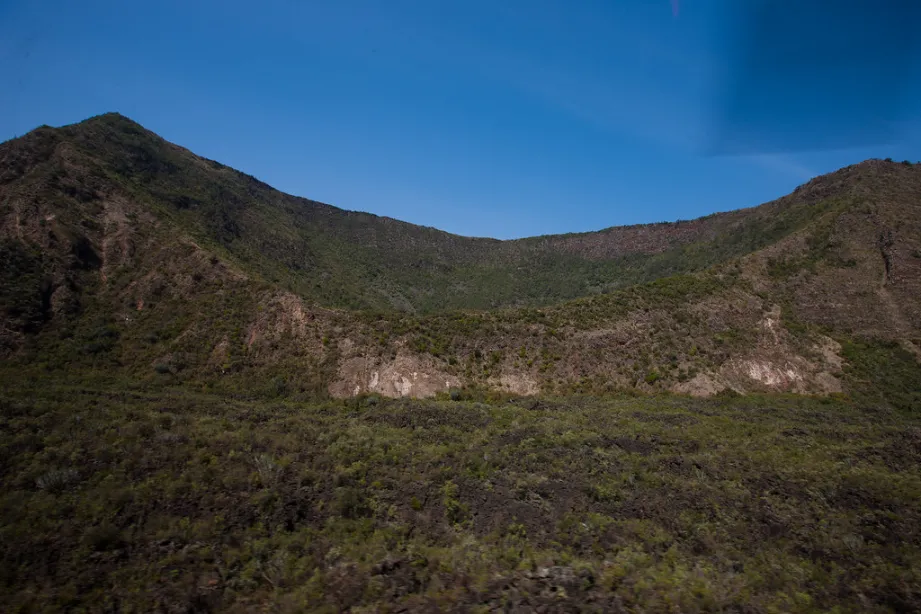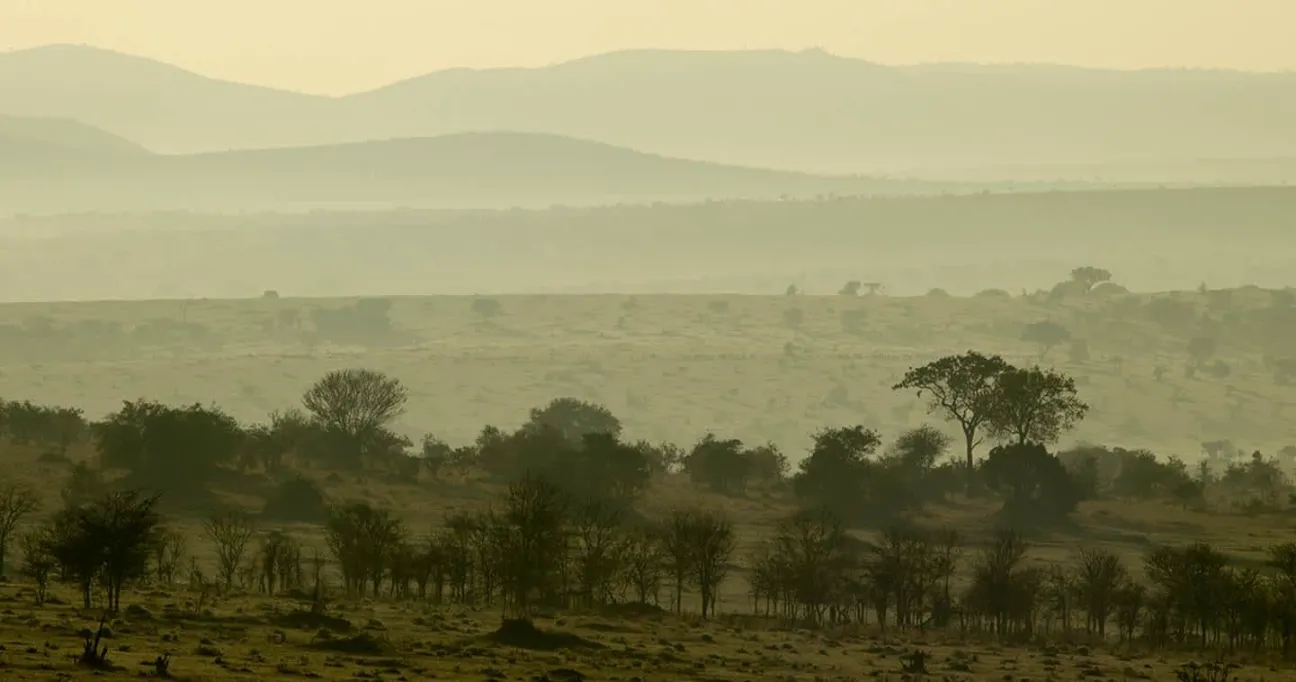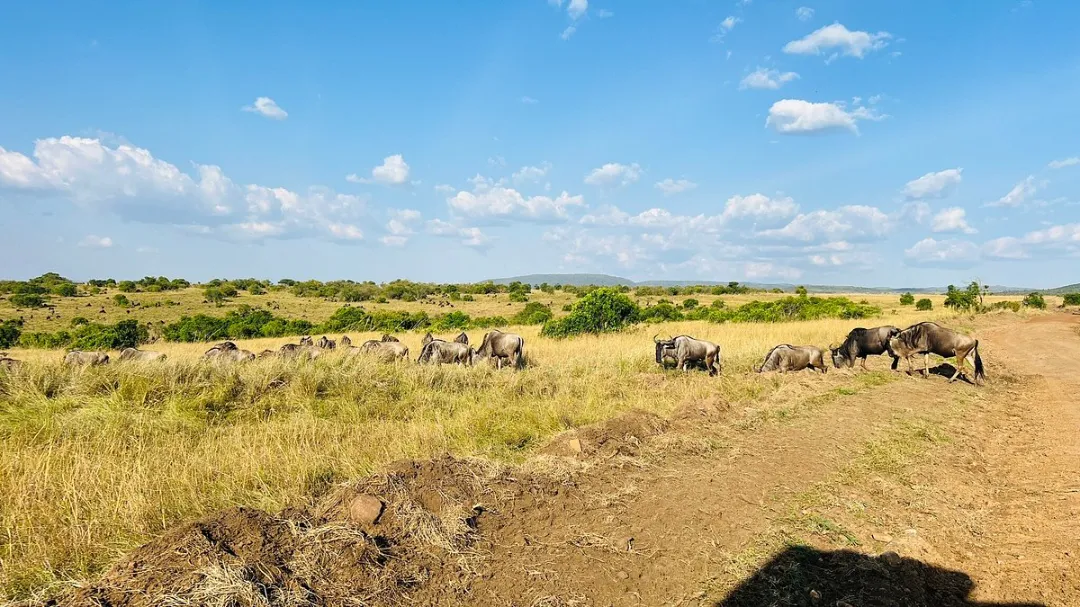Landscape Vegetation Masai Mara: Exploring Kenya's Rich Flora and Fauna
Table of Contents
The Masai Mara National Reserve, covering approximately 1,510 square kilometers, is a mosaic of diverse landscapes that lie within the Great Rift Valley, closely connected to the Kenyan highlands. Nestled at an altitude ranging from 1,480 to 2,280 meters, the reserve’s terrain is a testament to the geological forces that have shaped it over millions of years. The foundation of the land, shaped by sedimentary deposits of sand, gravel, and lacustrine sediments, tells a story of ancient geological processes.
Each area within the reserve, from the Ngama Hills’ leafy bushes to the Mara Triangle’s acacia woodlands and the towering Oloololo Escarpment, offers unique ecological niches that enhance the overall biodiversity of the Mara ecosystem.
The rich flora and fauna of the Masai Mara extend beyond its Masai Mara border into the greater Mara-Serengeti ecosystem. This seamless integration with the Serengeti National Park in Tanzania creates a continuous wildlife corridor, allowing species to migrate freely and maintain genetic diversity.
The Masai Mara’s geographical and ecological diversity, enriched by its proximity to the Kenyan highlands, makes the Maasai Mara National Reserve one of Africa’s most famous safari destinations, offering unparalleled opportunities to observe wildlife in their natural habitats.

Ngama Hills
Located on the eastern side of the Masai Mara National Reserve, these hills, which are a haven for wildlife, feature leafy bushes and fertile sandy soil. The hills are particularly known for their significant rock formations, including granite and quartz, which provide a unique geomorphological landscape. The lush grasslands and acacia-filled woodlands of the hills create an ideal habitat for a variety of birds and grazing animals, enhancing the region’s biodiversity.

Mara Triangle
The triangle, a key area within the Masai Mara National Reserve, is renowned for its unique and rich biodiversity. Dominated by lush grasslands and acacia-filled woodlands, this region is a prime spot for observing the diverse wildlife that calls the Masai Mara home, including Africa’s large mammals. The rolling grasslands, scattered with termite mounds, create a distinct ecological feature that supports a variety of species.
Oloololo Escarpment
Forming the natural northwest boundary of the Masai Mara National Reserve, the Oloololo Escarpment is a striking feature. This towering escarpment not only provides breathtaking views of the Masai Mara plains but also supports a rich diversity of plant life. The vegetation on the Oloololo Escarpment has been shaped by various factors, including fire and damage caused by elephants, leading to a unique ecological environment. The forest floor beneath the escarpment is teeming with life, featuring a variety of plant species that contribute to the overall biodiversity of the Masai Mara ecosystem.
The Endless Golden Grasslands
The vast golden grasslands are perhaps the most iconic feature of the Masai Mara plains. The expansive plains, characterized by rolling hills and seasonal riverlets, provide an ideal environment for observing wildlife interactions.
The golden grasslands are crucial habitats for large herbivores, such as zebras and elephants, which in turn support a variety of carnivores, creating a dynamic and interdependent ecosystem.
Mara River and Talek River
The Mara and Talek are the lifeblood of the Masai Mara, sustaining rich ecosystems and supporting diverse wildlife. As two major rivers in the region, they stretch 395 kilometers, with the Mara River flowing through the reserve and into the Serengeti. These two rivers create vital sectors for safari drives and are crucial for maintaining the local ecosystem.
Sectors divided by these two rivers include the Musiara Sector, Mara Triangle, and Sekenani Sector, each offering unique experiences and wildlife viewing opportunities.
Mara River Basin
Acting as a vital artery, the Mara River connects the Masai Mara and Serengeti, facilitating the annual migration of over two million wildebeest and other herbivores. During this epic annual trek, wildebeest and zebras frequently cross the Mara River, highlighting its importance in their life cycles. Acting as a lifeline, the river plays a crucial role in the migration pattern during the animals’ arduous journey from the Serengeti to the Masai Mara. The interplay of water and land in the Mara River Basin shapes the lives of countless species, creating a dynamic environment.

Riverine Forests
The riverine forests along the Mara River create a lush and vibrant ecosystem supporting various wildlife. Home to diverse species like colobus monkeys, forest pigs, hippos, crocodiles, and leopards, Mara’s riverine forests create a rich tapestry of life along the riverbanks. The tall sycamore figs and fever trees that characterize these forests contribute to the unique biodiversity of the region. Walking safaris in these areas offer an immersive experience, allowing visitors to explore the intricate ecosystems and observe wildlife up close, making it an unforgettable adventure.

Loita Hills: A Hidden Gem
Located on the outskirts of the Maasai Mara, the Loita Hills are a hidden gem characterized by indigenous forests and a serene atmosphere. Unlike the more crowded tourist spots within the reserve, the hills offer a peaceful retreat for visitors seeking a quieter safari experience. The pristine environment of the Loita Hills, due to relatively low visitor numbers, makes it an ideal destination for those looking to connect with nature.

The Loita Hills region is notable for its unique wildlife, featuring rare sightings of forest-dwelling animals and various native bird species. These rare encounters make the hills a special destination for wildlife enthusiasts, offering a chance to observe the hidden gems of Masai Mara’s fauna.
Comparative Landscapes: Masai Mara vs Serengeti

These two famous safari destinations, the Masai Mara and Serengeti together form the Mara-Serengeti ecosystem, yet each offers unique experiences. Located within the Great Rift Valley, the Maasai Mara is characterized by its diverse terrain, including rolling grasslands, riverine forests, and towering escarpments. The Mara Triangle, located between the Oloololo Escarpment and the Mara River, is particularly noted for its wildlife viewing opportunities.
In contrast, the Serengeti is known for its vast open plains and extensive river systems that support rich biodiversity.
Biodiversity Comparison
As a biodiversity hotspot, the Maasai Mara supports nearly 90 species of mammals and a rich variety of bird species. Besides the Big Five, the Mara is home to the ‘Big Nine’, including giraffes, cheetahs, hippos, and zebras. This higher animal density compared to the Serengeti underscores the ecological richness of the Mara.
Shared River Systems
The Mara and Talek rivers are crucial in connecting the Maasai Mara National Reserve to the Serengeti ecosystem. These river systems support rich vegetation and diverse wildlife, including species that participate in the great migration. During the rainy season, these rivers swell, transforming the landscape and providing essential water resources that sustain the ecosystem’s vitality.
Shared river systems between the Mara and Serengeti are vital for the annual great migration, facilitating the movement of millions of wildebeest and other animals. These rivers are lifelines sustaining the diverse ecosystems of both the Masai Mara and Serengeti, highlighting the interconnectedness of these iconic regions, especially during the rainy season when water is abundant.
Wildlife Protection
Poaching for bushmeat poses a significant threat in the Mara, with over 50,000 animals killed annually in Kenya for this purpose. Anti-poaching initiatives in the Mara have led to the arrest of thousands of poachers and the removal of tens of thousands of snares to protect wildlife. These efforts are crucial in preserving the rich biodiversity of the reserve.
Community-owned conservancies around the Mara provide alternative livelihoods for locals, thereby reducing the need for poaching. Leasing their land to tourism operators allows Maasai landowners to secure a steady income while conserving wildlife habitats. These conservancies play a vital role in wildlife protection, creating a sustainable model that benefits both the environment and the local communities.
Frequently Asked Questions
What role do local Maasai communities play in conservation?
Local Maasai communities play a crucial role in conservation by implementing sustainable practices, managing natural resources to support biodiversity, and harmonizing their economic needs with environmental preservation. Their involvement is essential for effective conservation efforts and promoting balance between nature and community livelihoods.
What are some of the conservation challenges in the Mara?
Poaching for bushmeat poses a considerable threat to wildlife in the Mara; however, anti-poaching initiatives and community-owned conservancies play a crucial role in protection efforts and offer alternative livelihoods for local communities.
Information About Masai Mara and Conservancy:
Welcome to AjKenya Safaris
Thanks for stopping by! We’re excited to help you plan an unforgettable safari.
- Phone: +254 748 258880
- WhatsApp: +254 748 258880
- Email: [email protected]
- Email: [email protected]




